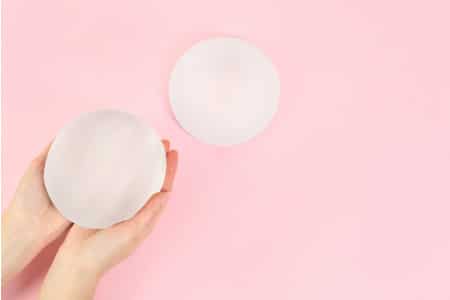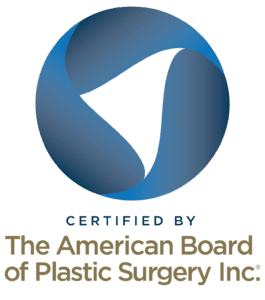![]()
Is your chest getting droopy? Or do you fantasize about having a bigger ‘rack’? These days, there are ways to give your breasts a once-over, so you feel good again when you glance in the mirror.
Breast implants or breast augmentation can transform the way you look and feel about yourself. But you probably heard about saline and silicone breast implants and wonder which is safer. Below is what you need to know before you decide to get breast implants. It’s good to know you can have a breast implant removal surgery if it’s not what you want, although this also has minor risks.
WHY PEOPLE GET BREAST IMPLANTS
Breast implants are popular, and hundreds of thousands of women worldwide decide to enhance their chests with implants annually. But are they worth the risk, and will you be happy with the results?
Many women weigh the risks and benefits of saline and silicone implants and go ahead with it. Here are the biggest reasons why:
- For most women, breast implants are safe with a low risk of complications.
- Implants can last more than 15 years.
- Implants are relatively affordable.
- Breast Augmentation improve your confidence and self-esteem.
- Recovery from the procedure is usually painless.
- You’ll enjoy an entirely new world of wardrobe choices.
SALINE VS SILICONE IMPLANTS
So, you’re tempted to go under the knife and improve your breasts. You need to know the different types of breast implants, which we highlight below. Which is safer? Hold tight. We’ll get to that a bit further down the page.
Saline Breast Implants
These implants are filled with sterile saltwater. One of the benefits of saline is that the implants are placed in the chest when they are empty. This allows your plastic surgeon to change how much saline solution is added until the breasts are the desired size and symmetrical.
Inflating your new and improved ‘girls’ later also means your incisions are smaller, so you can enjoy minimal scarring in your future! Plus, saline implants can be inserted under the arm or even through the belly button for almost no scarring at all.
If you want saline implants, you’ll need to have a decent volume of breast tissue. If your breasts are too small, you could have a rippling around the edges of your new and improved breasts – not a good look.
Saline implants don’t have the natural feel of silicone, but you’ll pay less for them. In the rare case that the implant bursts, your body will naturally absorb the solution – it’s just saline, after all.
Silicone gel breast implants
These implants with silicone shell are the most common choice. They work great for women who want to transform their breasts but lack a lot of breast tissue. Silicone implants usually make your breasts look like the real McCoy. Also, they have a more natural feel than saline.
If a rupture happens, the silicone gel will keep its shape and not migrate to other parts of the body. You might not have a clue that your implant ruptured unless you feel pain or notice an altered appearance down there.
WHICH IMPLANT IS SAFER?
Now let’s get down to safety. Which implant is more likely to give you problems? For most people, both types of breast implants are safe. The FDA has approved silicone and saline implants as safe and effective. Current research tells us there isn’t a big safety difference between the saline or silicone implants.
There was a time when some studies suggested that ruptured silicone implants could rupture and make some women ill. FDA withdrew its approval of silicone implants. Some women claimed that their ruptured silicone implants gave them various illnesses, including:
- Fibromyalgia
- Lupus
- Rheumatoid arthritis
Some women claimed their illness symptoms faded when the implants were taken out.
Since then, additional clinical studies have shown no higher risk of illness for patients with silicone vs. saline implants. FDA reapproved silicone implants in 2006.
SALINE AND SILICONE IMPLANTS DIFFERENCES
Both implants are safe, but you should know some of the issues and factors affecting each implant types first.
Implant Rupture
This is rare, but you should know of the small possibility that a saline or silicone implant can rupture. Remember that neither implant is made to last your whole life. You might need to go under the knife again in the future to replace your implants.
Regarding ruptures, a saline implant will just release harmless seawater into your body. You’ll need another surgery to take out the deflated implant and place a new one.
If a silicone implant ruptures, the gel is cohesive and should not leak out. Generally, silicone implants don’t rupture as much as saline. But if it happens to you, it’s harder to detect if a silicone product has ruptured.
Saline implant ruptures are easier to spot as the breast changes shape quickly. Ruptures of silicone products are often silent, and your doctor may not even notice. You’ll need an MRI for conclusive proof.
Platinum
Silicone implants have platinum, and saline implants don’t. Some women think platinum is hazardous, but FDA reports that it doesn’t pose significant risks to patients.
Surgical Differences
As we noted earlier, saline implants are filled after the outer shell is placed in your chest. So they don’t need a large incision compared to silicone implants. Plus, say you look in the mirror, and you want that ‘rack’ to be more impressive. You can ask your surgeon to ‘pump them up,’ and you don’t need more surgery.
But you cannot change the size of silicone implants. It’s a done deal unless you have revision surgery.
ELIGIBILITY
You want implants, but there are differences in who can get which implant type. For breast reconstruction, women can get either implant at any age. But for breast augmentation, saline implants have FDA approval for those who are 18 and older. Women must be at least 22 to get silicone implants.
FDA reports the difference is that removing ruptured silicone implants is more problematic, so they don’t want younger women getting those.
 Questions and Answers
Questions and Answers
Is it better to get saline or silicone gel implants?
Silicone implants are recognized for their ability to closely mimic the appearance and texture of natural breast contours, whether positioned above or below the chest muscle. They are particularly effective in cases where there is limited existing breast tissue for breast augmentation.
Why are saline breast implants cheaper than silicone?
Saline implants are more cost-effective compared to silicone implants due to their filling material. Saline consists of a sterile blend of salt and water.
Conversely, silicone gel implants are filled with silicone gel, which comes in various densities and incurs higher production costs than a saltwater solution.
Do saline breast implants look bigger than silicone for breast augmentation?
Both silicone and saline implants are intended to equally augment breast size. The same volume of implant provides the same increase in breast size, whether it’s filled with gel or saline.
REQUEST A HOUSTON BREAST IMPLANT CONSULTATION
Suppose you’re thrilled about the idea of perking up your ‘girls.’ So, set up a Houston breast augmentation surgery consultation with Dr. Ashley Steinberg today.
She’ll cover the risks and benefits of breast implants and help you decide if the procedure is a good option for you.
References
- 7 Reasons Breast Implants Are Worth It. (2018). Accessed at https://lookyounger.net/7-reasons-breast-implants-are-worth-it
- Breast Implant Overview. (n.d.). Accessed at https://www.mayoclinic.org/healthy-lifestyle/womens-health/in-depth/breast-implants
- FDA Statement on Breast Implant Safety. (September 2020). Accessed at https://www.fda.gov/medical-devices/implants-and-prosthetics/breast-implants
- Houston Breast Lift. (February 22). Accessed at https://www.drsteinberg.com/procedures/breast/breast-lift/



 Questions and Answers
Questions and Answers








